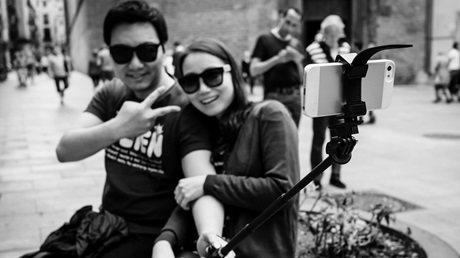How technology-driven "hyperreality" hijacks our attention and makes us numb to real-life dangers.

Not long ago, my community lost a beloved young member because of his repeated trespassing onto a dangerous train trestle to take selfies. He posted them with the hashtag #liveauthentic. His last time there, he died while trying to outrun the train. (People take such extraordinary measures to get selfies that so-called “selfie-related deaths” are a global phenomenon. Wikipedia now keeps a tally.) For him and for many others, capturing an experience with a photo, video, tweet, or blog post can hold more importance than the actual experience and reflects a phenomenon that the French philosopher Jean Baudrillard called the hyperreal.
In his 1986 book, America, Baudrillard cited the election of a Hollywood actor, Ronald Reagan, to the presidency as evidence of the hyperreal. Hyperreality describes a postmodern, highly technological society in which the lines between the real and simulations of the real become hopelessly (although often purposely) blurred to the point that we can no longer distinguish between reality and imitations of reality. When someone believes that reality TV actually represents real life, or when Coca-Cola—which was originally a simulation of cocaine—gets labeled as “the real thing,” or when we really feel liked by the number of “likes” on Facebook, we’re dealing with the hyperreal.
For example, this month’s release of the mobile app Pokémon Go—a video game using “augmented reality” (blending virtual reality with our actual surroundings)— has police cautioning players to be more mindful of the real world. One girl was hit by a car while walking into traffic and two men fell off an ocean bluff while playing. More generally, …


